As our research into objects to display at V&A East Storehouse progresses, I have been investigating objects connected to religious beliefs from around the globe. The V&A collection includes a vast array of objects linked to faiths and spiritual beliefs. They tell us stories of the devotion that inspired and motivated people, often becoming crucial emblems of personal identity.
Domestic objects can reveal aspects of daily life that are not recorded in historical documents. In some cases, artists and makers sought ways to mass-produce domestic objects, which often were intended not only to be looked at, but to fulfil a functional purpose. Such objects of popular use and daily devotion in the home are often overshadowed by the extravagance that defined 17th and 18th century Italian art, architecture and interiors.
However, as we will see, there is a strong relationship between the grandiose masterpieces created for ecclesiastical settings and the smaller, often unrefined devotional objects produced for domestic use.
Holy water from church to bedchamber
In Catholic Churches, a holy water basin welcomes all visitors as they enter. Worshippers dip their fingers in the holy water, and make the sign of the cross. This act evokes the Baptism, during which a priest pours holy water onto a child’s forehead as a symbol of purification.
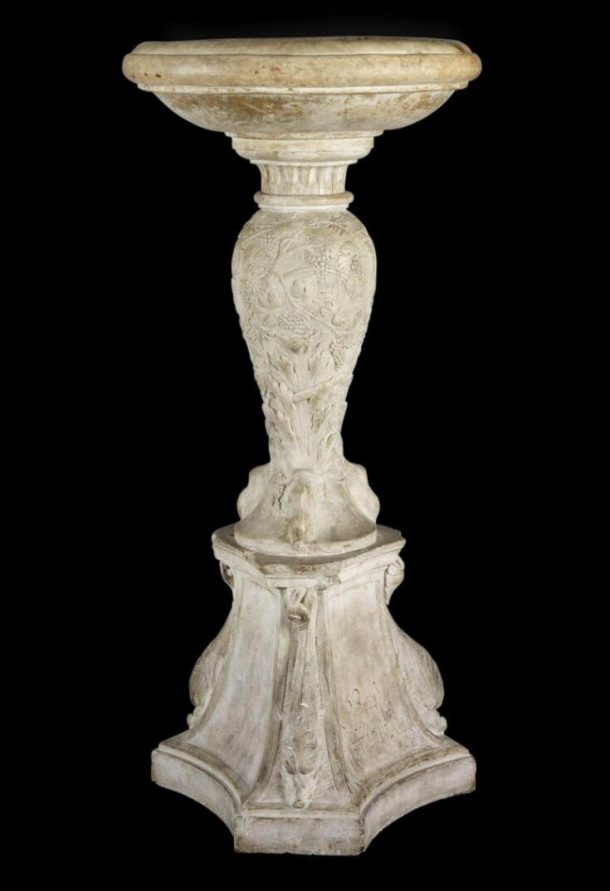
A smaller version of this was produced for domestic use. In the 15th and 16th century this consisted of little more than a metal bucket, similar to this brass example from late 15th century Venice.
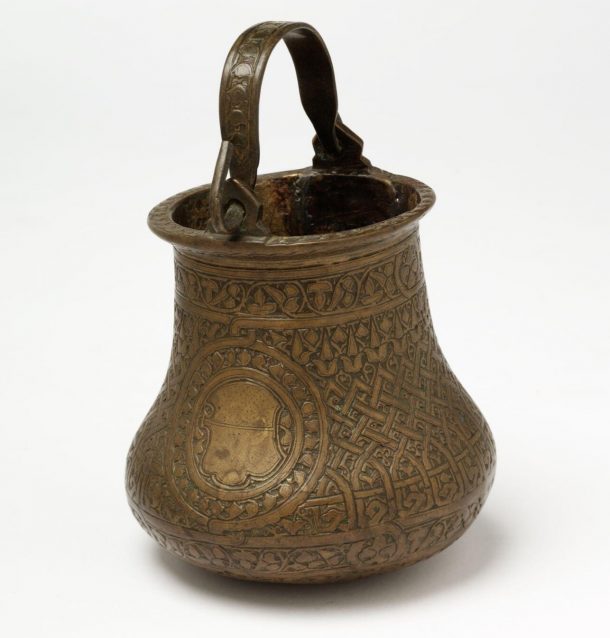
Buckets such as this would hang below a devotional image, usually of the Virgin and Child. These could be either painted or in relief.
Lorenzo Lotto’s drawing of an ecclesiastic in his study from 1539 in the British Museum shows one of these buckets hanging under a sacred image on the wall at the back, near the bed.
In the late 16th century, the holy water basin and the sacred image finally merged together into a single object. Domestic objects of this kind often hung at the entrance of a house or on the bedroom walls. Versions made from precious metals (such as silver or bronze) were reserved for wealthy households. Ceramic examples were more economical to produce and buy, and therefore would have been more accessible to the wider community.
Just as they would in Church, these objects offered worshippers a heightened level of connectedness with the sacred, but in the privacy of their own homes. In addition, holy water was a potent instrument of protection against evil, and mothers were advised to sprinkle it over their children every day in the morning and at night when they were ill.
Angels: A common motif
The V&A collection comprises several ceramic stoups, most of which are Italian pieces from the 17th and 18th century donated in 1927 by Mrs Ada Cardinale, in memory of her husband Commendatore G. Cardinale. Although the decoration is not of the highest quality, the importance of these objects should not be underestimated. The fact that these objects were produced in such large numbers demonstrates the widespread popularity of devotional practices in the home.
Domestic stoups were decorated with a variety of common Christian subjects such as the Virgin and Child, the Infant Christ, saints or the cross. What most of them have in common is the presence of angels and cherubs. This was likely inherited from the decoration of earlier domestic devotional images like the stucco relief after Donatello seen above, which, in turn, was inspired by Church altarpieces. Angels usually surround the central image and often hold a crown above it, such as those in the stoup with the Communion chalice.
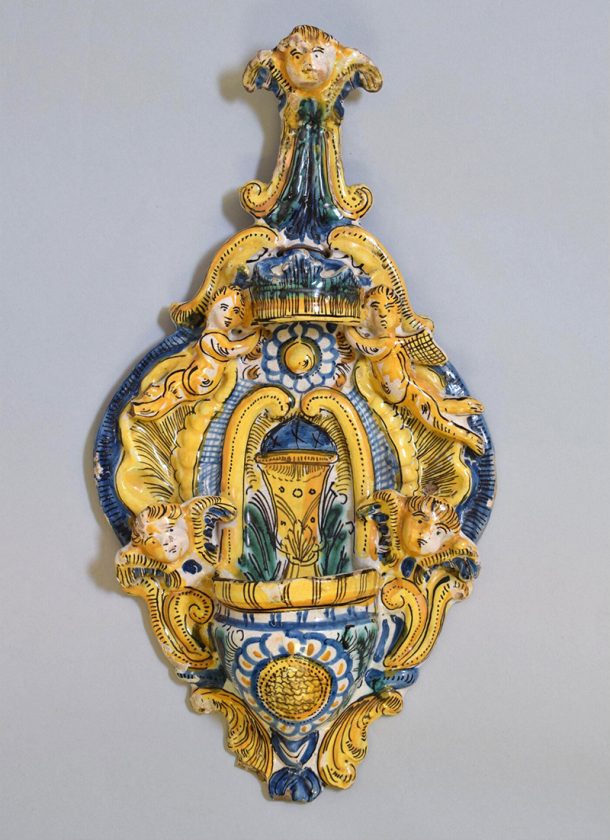
Sometimes angels were given a more prominent position and a more sculptural, three dimensional, appearance, such as in the stoup with the Immaculate Conception.
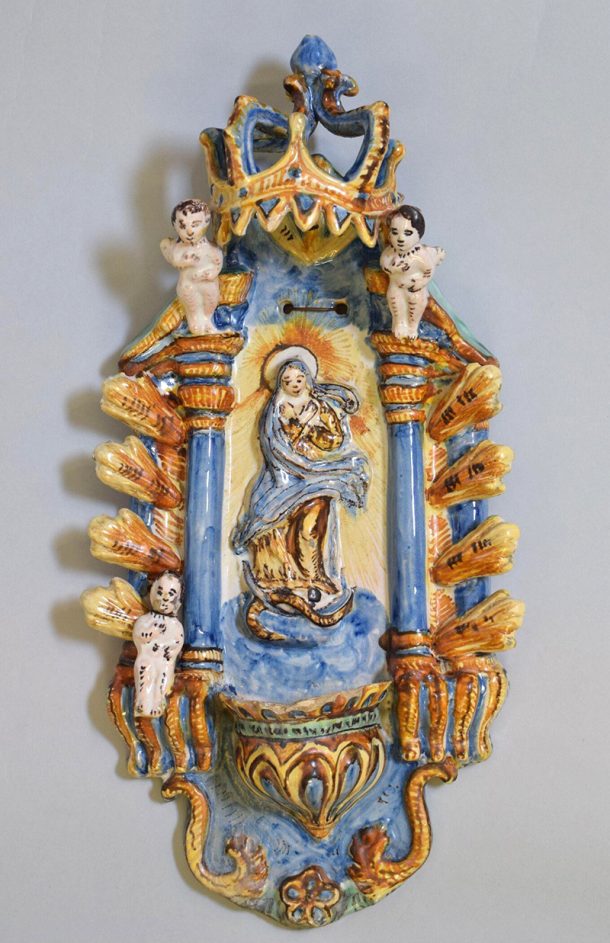
Similarly, the stoup with the Virgin and Child, shows four angels surrounding the back panel, and a cherub’s head at the top.
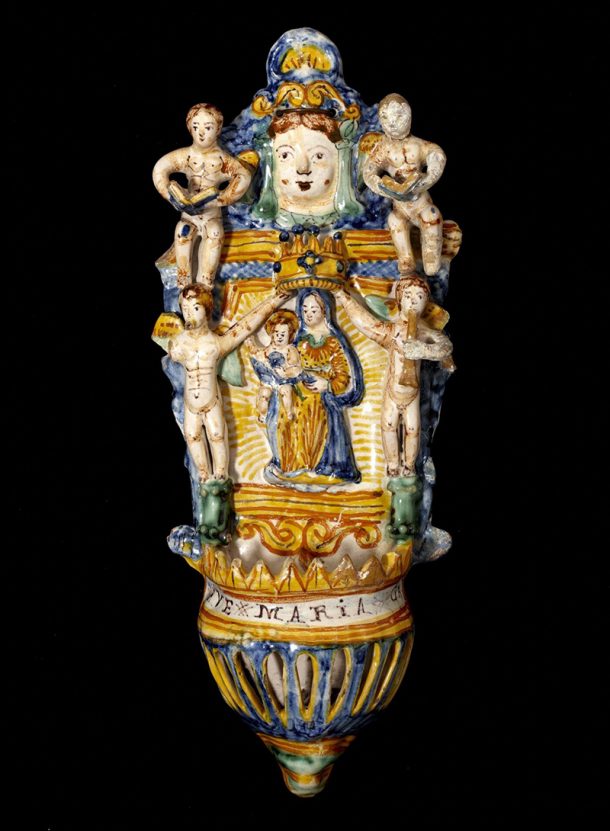
Domestic holy water stoups both reproduce and combine the sacred objects that people came into contact with in Church: the holy water basin at the entrance and the altarpiece above the altar in the apse. They can be seen as miniaturised versions of the larger ecclesiastical maiolica altarpieces, such as those made by the della Robbia workshop in Florence from the mid-15th century. The three-dimensional angels on these stoups are reminiscent of sculptures like this boy playing the bagpipe, which was originally part of an ecclesiastical altarpiece. In this way, stoups became the equivalent of a small domestic chapel.
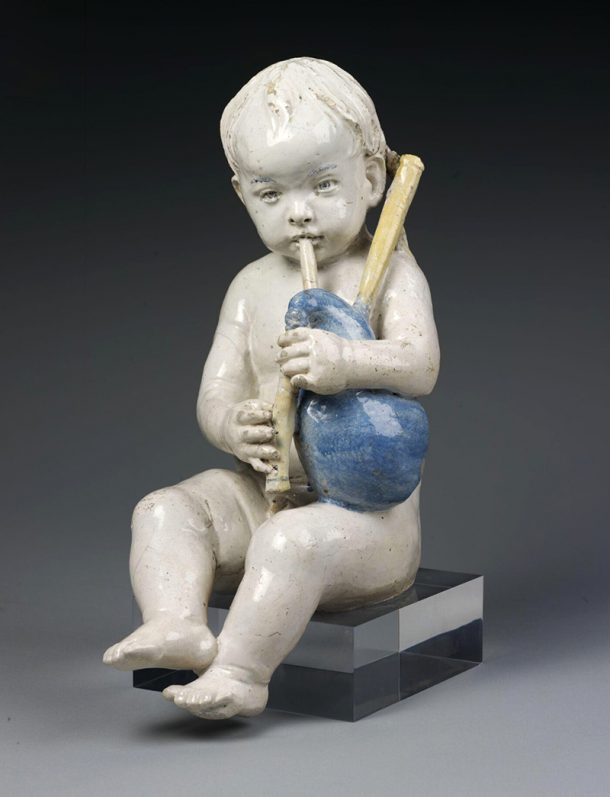
In some cases, an angel could even become the protagonist and occupy the central (and most important) position on the back panel of a stoup, as can be seen in this example, where an angel is surrounded by six more angelic figures. This could possibly represent a ‘Guardian Angel’, an angel thought to be assigned to each person, for their protection.
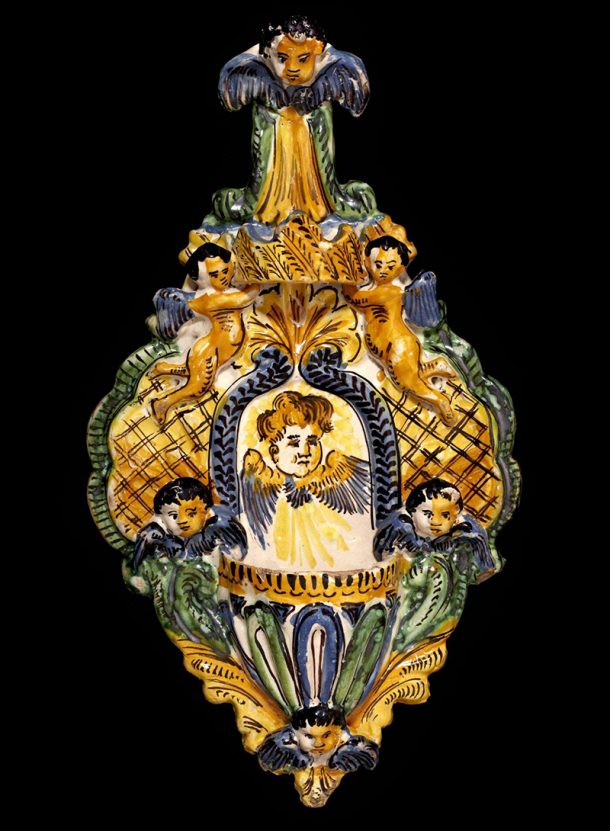
Domestic holy water stoups performed a hugely significant role in everyday life, despite their size and relatively unrefined execution. Whilst they may be outshone by the grandiose masterpieces of the time, these objects provide a unique insight into daily devotional experience, and how artists would adopt and adapt the design of ecclesiastical altarpieces to create them.
At the V&A East Storehouse, we are hoping to create new narratives around objects in the collections and to find parallels between different religions and cultures. In the next ‘Daily Devotions’ post, we will investigate some of the objects in the collection linked to Hinduism.
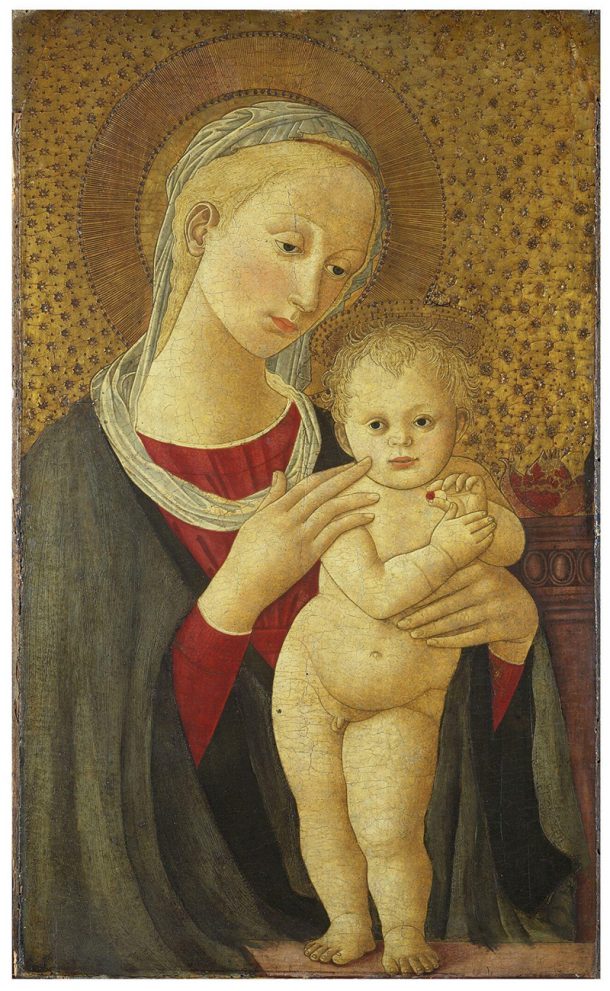
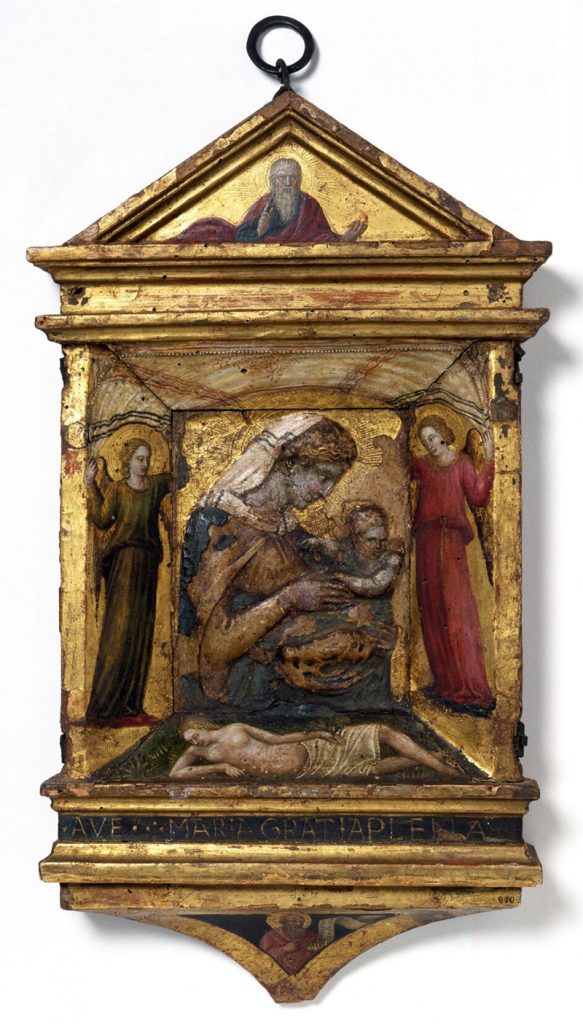



Fascinating insights into these personal and often domestic objects that formed part of so many peoples lives. I look forward to the next one.